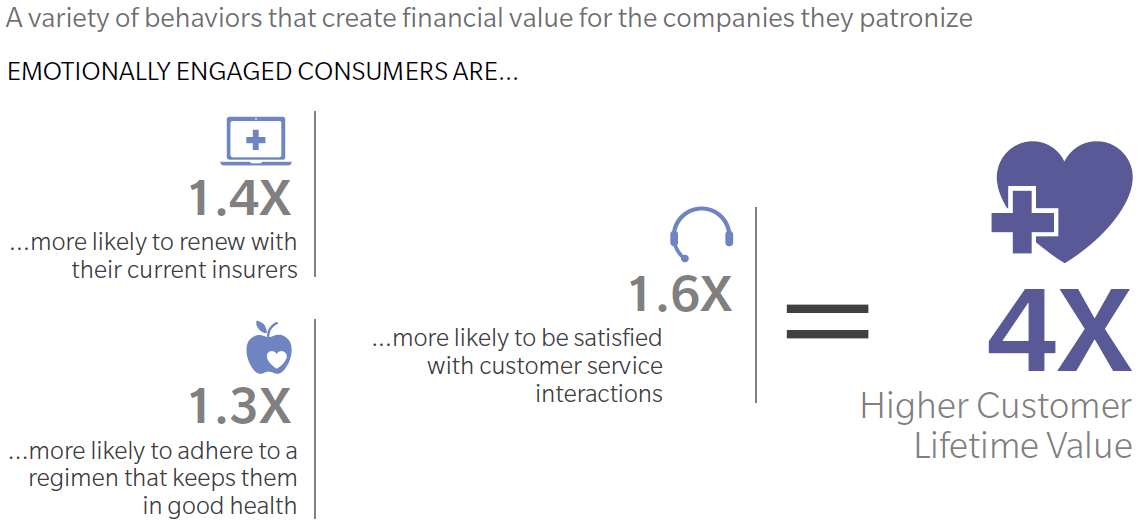Maybe it’s easy to understand. You can’t play Candy Crush on your insurer’s website, and texts from your doctor are usually to remind you about an appointment you may not be that enthusiastic to keep. Most of us don’t even see our doctors that often or need to file insurance claims regularly. While patients can give providers and payers four stars in satisfaction surveys, healthcare organizations aren’t really sure they’ll promote them with their friends, or more importantly, even come back.
Are healthcare providers and payers magnetic enough to build consumer loyalty?
SEMPER FI?
The test is whether consumers feel like they have something to lose if they look elsewhere. And most in the healthcare industry doubt whether they build the kind of enduring love and fidelity that iPhones or Androids have been able to generate with their respective users – even after devices literally burst into flames or suffer buggy upgrades and bad design changes.
Loyalty isn’t reserved for mobiles. Take Southwest Airlines. Its combination of low-ish fares, surprise sales, friendly desk agents, two free bags, A-B-C boarding groups, and wisecracking flight attendants has produced a significant number of consumers who literally arrange their travel itinerary, even vacations, around the availability of Southwest flights. Sure, Southwest loses bags and suffers flight delays the same as any airlines, but United Airlines, for example, gets inundated with 20 times the number of complaints for the same problems. Is the airline 20 times worse, or does it just lack the magnetism of a Southwest? Has it failed to build the bond that lets passengers excuse some problems?
Such magnetic organizations and product lines provide lessons for healthcare providers and payers trying to become indispensable partners with their consumers. And the lessons begin with understanding the value being provided.
HOW IT ADDS UP
The basic formula for corporate magnetism:
F + E + $ = Magnetism
F stands for functionality: What burning consumer problem is a company or industry trying to solve, and what hassles is it going to eliminate? An iPhone, for example, fulfills so many different functions and solves so many problems: It's a newspaper, book, wallet, address book, daily planner, camera, family photo book, and journal. It never loses train tickets; it provides maps and directions on command; and it plays the music the owner loves – and the data it stores syncs with – and the information syncs with other electronic devices automatically. The byproduct: the undying loyalty its owners feel towards the product and Apple.
One would think healthcare would have functionality in the bag – after all, it keeps you alive and healthy. But it comes at a big price – expense, scheduling hassles, confusion, a lack of trust. Most healthcare consumers experience a thicket of administration and complexity between them and the care they need. First, it’s finding a doctor that’s in-network with convenient appointments. Then, there’s the unwelcome paperwork and opaque language from their insurance company. How can a consumer feel loyalty to organizations that act like they don’t trust or welcome them? Providers and payers who remove those obstacles are on their way to magnetism and creating lasting relationships, especially when their competitors aren't following suit.
WHY COMPANIES SHOULD WANT EMOTIONALLY ENGAGED CONSUMERS

Source: Oliver Wyman analysis
IS THERE LOVE?
E stands for emotional appeal: What does your brand stand for? Do customers believe that you view them as the center of the universe? Do they love you? Do you love them? Consumers need to trust that you will be there when they need you – even if they don’t need you that often. That requires anticipating their needs and filling them. Amazon shoppers, for instance, know that they can get virtually anything they want – often overnight and sometimes the same day – at a competitive price, never moving from their home. They can rely on dozens, if not hundreds, of reviews to help ensure that they'll be happy with their purchase. There’s an even bigger emotional component with healthcare purchases.
Consumers are often already stressed and worried when they interact with providers and insurers. They are looking for solace, and as a healthcare organization, you can provide it if you recognize the kind of things they need – a caring person to speak with, a company trying hard to solve their problem. In other words, make them feel better, in addition to addressing their medical needs and paying for their care.
It’s not always about being the least expensive. Just ask iPhone users.
VALUE VERSUS COST
$ stands for value, not cost: Whether it’s actual or perceived, customers need to feel they have received something valuable from their healthcare providers. It's not about being the least expensive – any iPhone buyer can tell you that. Southwest doesn't necessarily offer the cheapest flights, and Amazon's prices aren't rock-bottom for every item, but their customers know that a better deal from an equally reliable brand may not be worth the effort finding it and may not arrive on the doorstep when they want it. Consumers already believe that healthcare and insurance cost too much. Even when there's no room to reduce that cost, there is always room to increase the value.
The weight of each component in the magnetism equation may vary depending on your customer population. Baby Boomers have entrenched low expectations of the healthcare system, which makes beating them not that hard. Millennials will pass over providers who don't let them book appointments or get test results on their phones. Caregivers – whether of children or aging parents – are desperately looking for a partner to ease their burden and may be the most loyal consumers of all if you can offer them solutions and support.
Ultimately, everyone – healthy or sick – seeing a healthcare provider is feeling a little stress over what they may find. Remembering that as you design a system may already put you ahead of the pack.
Healthcare hasn't yet seen its iPhone, its Southwest, its Amazon. But that doesn't mean it can't. Developing magnetism may be just a function of how much you appreciate the consumer you’re trying to attract.
About the Authors
Helen Leis is a New York-based partner in Oliver Wyman’s Health & Life Sciences practice.
Paula Sunshine is senior vice president and chief marketing executive of Independence Blue Cross.



